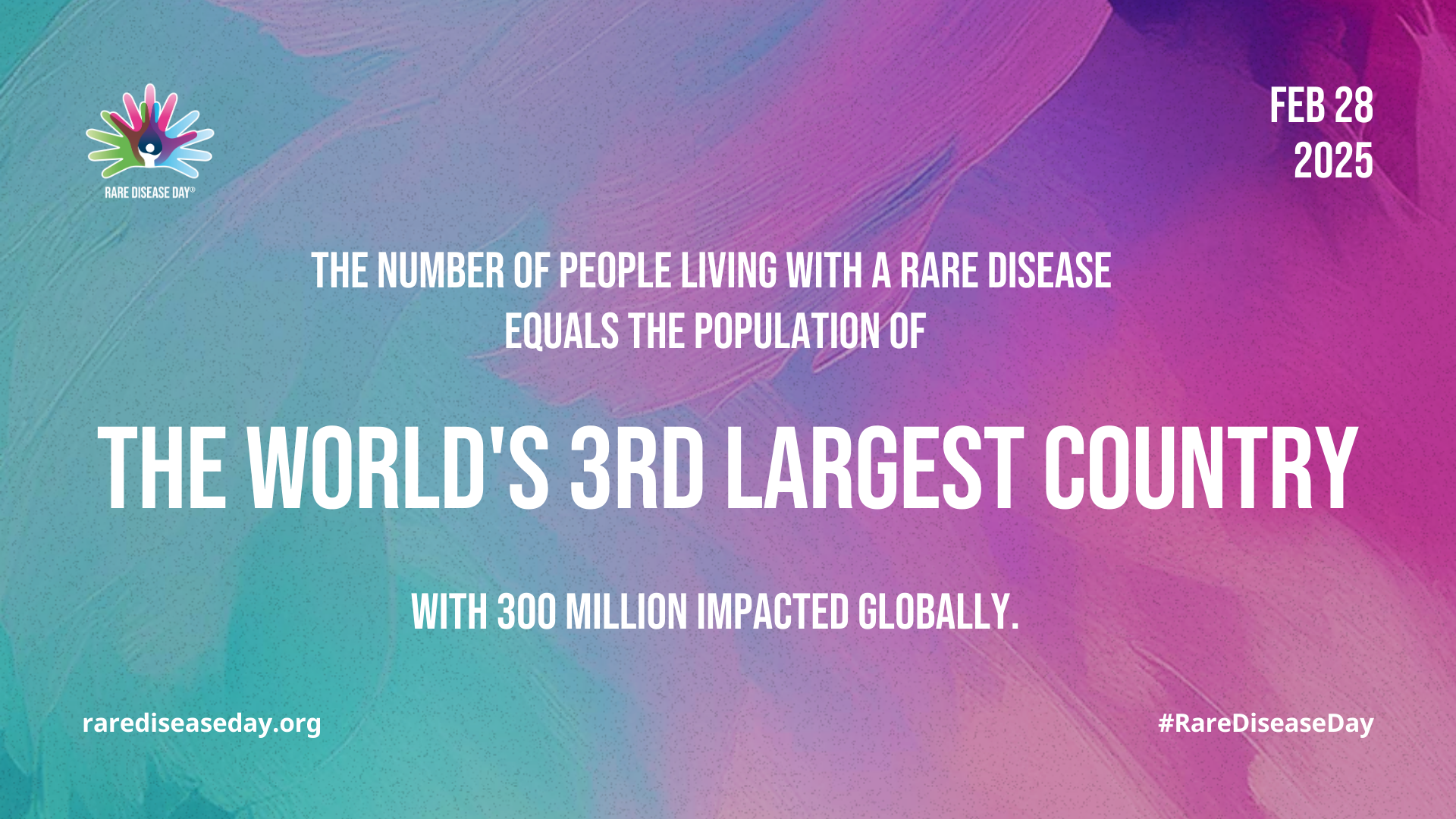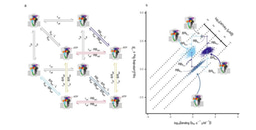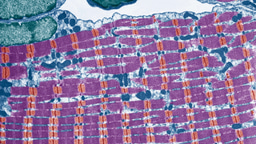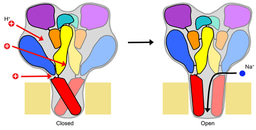Rare Disease Day 2025 - “Raising awareness and generating change for the 300 million people worldwide living with a rare disease, their families and carers.”
Published in Neuroscience, Genetics & Genomics, and Biomedical Research

The global community comes together to observe Rare Disease Day on the last day of February every year. This selection of content is related to the SDG 3 goal: "Ensure healthy lives and promote well-being for all at all ages", and to the related key targets.

Rare diseases, often misunderstood and overlooked, affect a small percentage of the population, typically fewer than 1 in 2,000 people in the UK. Rare diseases encompass a wide range of disorders, many of which are genetic and present from birth, though they can also appear later in life. Despite their rarity, the collective impact of these diseases is significant, as they often lead to chronic health issues and complex medical needs. By raising awareness and fostering a global community of support, Rare Disease Day 2025 aims to drive research, improve patient care, and advocate for the rights and needs of those affected by these unique conditions.
Highlights from Springer Nature journals
Francesc Pala (Editor-in-Chief of Orphanet Journal of Rare Diseases) and Jordi Pijuan (Managing Editor of OJRD), in the blog and their co-authored editorial, delve into the pivotal role of clinical research in advancing medical knowledge and improving patient care, especially for rare diseases. However, challenges like poor recruitment and study designs can hinder progress. This editorial highlights the importance of patient and public involvement in ensuring research aligns with patient needs, enhancing study relevance, and ultimately improving health outcomes.
They also highlight the European registry hub, the EURO-NMD registry, for bridging siloed patient information and resources for rare neuromuscular diseases, which is discussed in an OJRD review and accompanying ‘Behind the Paper‘ blog by Antonio Atalaia. The EURO-NMD Registry gathers detailed data from neuromuscular disease patients at top centres, with help from patient groups to keep it relevant and impactful, to improve healthcare and advance research for neuromuscular diseases.
Other recent OJRD content includes a paper by José Antonio Sánchez Alcázar and a blog discussing the therapeutic effects of multitarget complex supplements in the rare genetic neurological disorder pantothenate-kinase-associated neurodegeneration (PKAN) which causes neurodegeneration with brain iron accumulation. Laura Mann in a paper and blog talks about how individuals with Turner syndrome face communication barriers due to early conductive and progressive sensorineural hearing loss. Hearing loss is a major unmet healthcare need, with many women not receiving proper evaluation or treatment. Hearing aids can improve communication confidence and quality of life, highlighting the need for long-term audiological care and monitoring. You can find an array of further research on rare diseases directly at OJRD. These include the overall winning essay on achalasia and runners up: a case study on Gaucher’s disease, challenges of conducting research in rare disease populations, and youth voices in rare disease policy for The Student Voice Prize 2024 related to a collaboration with beacon for rare diseases and Medics4RareDisease.
Another collection of studies from BMC highlights various aspects of rare diseases. The first study (BMC Pediatrics) reviews brain and bone imaging in Menkes disease, providing insights from a case report and literature review. The second study (BMC Primary Care) explores the healthcare experiences of Canadian women with Cushing’s syndrome, revealing systemic failures. Studies from BMC Medical Informatics and Decision Making introduce a hybrid framework using large language models for rare disease phenotyping, and discuss challenges in diagnosing complex rare diseases, focusing on lessons learned from testing diagnostic support systems on ciliopathies.
Studies in Scientific Reports highlight the diagnostic and genetic aspects of rare diseases, including a study demonstrating the effectiveness of whole-exome sequencing in diagnosing rare and undiagnosed diseases in Czech pediatric patients. Another study investigates the genetic epidemiology of amyotrophic lateral sclerosis (ALS) in Cyprus, providing insights into its prevalence and genetic factors, which are crucial for understanding and managing ALS in this population.
Exploring key highlighted studies on rare conditions in SpringerLink Journal of Rare Diseases, provides an examination of the epidemiology and healthcare resource use associated with Duchenne muscular dystrophy, shedding light on the burden of this disease. The second highlighted study shows the widespread service fragmentation faced by patients and families with tuberous sclerosis complex (TSC) in the Republic of Ireland, emphasizing the need for integrated care. Lastly, there is a review of the pathogenesis, management, and future treatment options for cystinosis, providing a comprehensive overview of this rare condition.
These studies underscore the importance of continued research and integrated care to improve outcomes for those affected by rare diseases.
Highlights from Springer Nature books
This volume on Rarer Arthropathies, part of the "Rare Diseases of the Immune System" series, updates clinicians on uncommon forms of arthritis and related conditions. It serves as a valuable resource for differential diagnosis, especially for unusual presentations. The book includes 19 expert-written chapters covering conditions like Palindromic Rheumatism, SAPHO Syndrome, and arthritis in leprosy, tuberculosis, and chikungunya. To commemorate Rare Disease Day, we spoke with the coauthors Dr Sham Samthanam, Dr Mohit Goyal and Dr Vinod Ravindran.
Collections calling for submissions
This Nature Portfolio joint Collection from Nature Communications, Communications Biology, npj Genomic Medicine and Scientific Reports calls for articles that provide significant new insights into the biology of rare genetic disorders.
Highlights from the ISRCTN clinical study registry
In her blog, Natalie Uhlenbusch, Senior Researcher, at University Medical Center Hamburg-Eppendorf discusses the Q.RARE.LI study. This study looks at a new approach to psychosocial support for patients with rare autoimmune liver diseases to investigate whether the program can be implemented into routine care. The Q.RARE.LI program protocol was recently published in BMC Psychiatry.
The blog written by Adam Galloway, now an ambassador for Medics4RareDisease, introduces a smartphone app for the self-management of Perthes’ Disease (Testing the Non-Stop app) that was shared in the On Medicine BMC Blog Network to celebrate Rare Disease Day 2024. Perthes’ Disease is a rare condition that affects the hip joint in children. A Q&A blog explores how this work has now led to the Op NON-STOP study, the first-ever RCT for Perthes’ Disease, answering a key question in paediatric orthopaedics: “How do we best treat children with Perthes’ Disease?”
Other studies in the registry include The Generation Study which investigates the genomes of newborn babies to see if rare genetic conditions can be identified and treated early. Linked investigations are reviewing and testing the feasibility of studying medium-chain fat supplementation in children with biliary atresia. The aim is to pave the way for a future trial comparing growth and outcomes in babies receiving different amounts of medium-chain fats.
Springer Nature Research Communities
To find insightful blog posts related to Rare Disease Day, you can explore the Springer Nature Research Communities website. This platform hosts a variety of articles and discussions from experts in the field, including a post by Chandan Sekhon who shared how language and format cause barriers in recruiting participants for rare disease research. Iman Muzafar's writing explores the uncertainty that people with rare conditions experience from the lived experience of a rare condition. Use the search function on the website to discover other relevant content and stay informed about the latest developments and initiatives.
Conclusion
If you want to get involved in Rare Disease Day this year, you can visit the official website, read the how-to guides on how to advocate, fundraise, organise an event, contact the media, and access social media resources.
Follow the Topic
-
Communications Biology

An open access journal from Nature Portfolio publishing high-quality research, reviews and commentary in all areas of the biological sciences, representing significant advances and bringing new biological insight to a specialized area of research.
-
npj Genomic Medicine

This is an international, peer-reviewed journal dedicated to publishing the most important scientific advances in all aspects of genomics and its application in the practice of medicine.
-
Nature Communications

An open access, multidisciplinary journal dedicated to publishing high-quality research in all areas of the biological, health, physical, chemical and Earth sciences.
-
BMC Primary Care

Previously known as BMC Family Practice, this is an open access, peer-reviewed journal that considers articles on all aspects of primary health care research.
-
ISRCTN: The UK’s Clinical Study Registry

A primary clinical trial registry recognised by WHO and ICMJE that accepts studies involving human subjects or populations with outcome measures assessing effects on human health and well-being, including studies in healthcare, social care, education, workplace safety and economic development.
-
Journal of Rare Diseases

This is an open access, peer-reviewed journal with clinical and basic research interests in rare and genetic diseases. A disease is defined as rare when it affects fewer than 1 in 2,000 people, of which 80–90% have a genetic background.
-
Orphanet Journal of Rare Diseases

An open access, peer-reviewed journal that encompasses all aspects of rare diseases and orphan drugs and publishes high-quality reviews on specific rare diseases.
-
BMC Pediatrics

This is an open access journal publishing peer-reviewed research articles in all aspects of health care in neonates, children and adolescents, as well as related molecular genetics, pathophysiology, and epidemiology.
-
BMC Medical Informatics and Decision Making

This is an open access journal publishing original peer-reviewed research articles in relation to the design, development, implementation, use, and evaluation of health information technologies and decision-making for human health.
Related Collections
With Collections, you can get published faster and increase your visibility.
Artificial Intelligence in Genomic Medicine
Publishing Model: Open Access
Deadline: Jun 23, 2026
Exercise prescription and patient outcomes
BMC Primary Care is calling for submissions to our Collection, Exercise prescription and patient outcomes. Exercise prescription as a component of healthcare is increasingly recognized for its potential to enhance patient outcomes across various populations. By integrating physical activity into treatment plans, healthcare providers can effectively address a range of health concerns, including chronic diseases, mental health disorders, and recovery from injuries. This Collection aims to bring together innovative research that investigates the role of exercise medicine in improving patient care, particularly focusing on evidence-based approaches to exercise prescription tailored to individual needs.
Understanding the significance of exercise prescription is vital for enhancing overall patient well-being. Recent advances in the field have demonstrated the effectiveness of tailored exercise interventions, leading to improved physical and mental health outcomes for patients. Additionally, the integration of exercise as medicine in primary care settings has shown promise in addressing conditions like osteoarthritis, heart disease, and diabetes, thereby reducing healthcare costs and improving quality of life. As awareness and acceptance of this approach grow, so too does the need for robust research to further elucidate its benefits.
In this Collection, we welcome submissions that span a wide array of topics, including but not limited to:
-Impact of exercise medicine on chronic disease management
-Role of physiotherapy in enhancing patient outcomes
-Exercise interventions for osteoarthritis patients
-Physical activity and mental health benefits
-Tailoring exercise prescriptions for individual needs
All manuscripts submitted to this journal, including those submitted to collections and special issues, are assessed in line with our editorial policies and the journal’s peer-review process. Reviewers and editors are required to declare competing interests and can be excluded from the peer review process if a competing interest exists.
Publishing Model: Open Access
Deadline: Jan 22, 2026



Please sign in or register for FREE
If you are a registered user on Research Communities by Springer Nature, please sign in